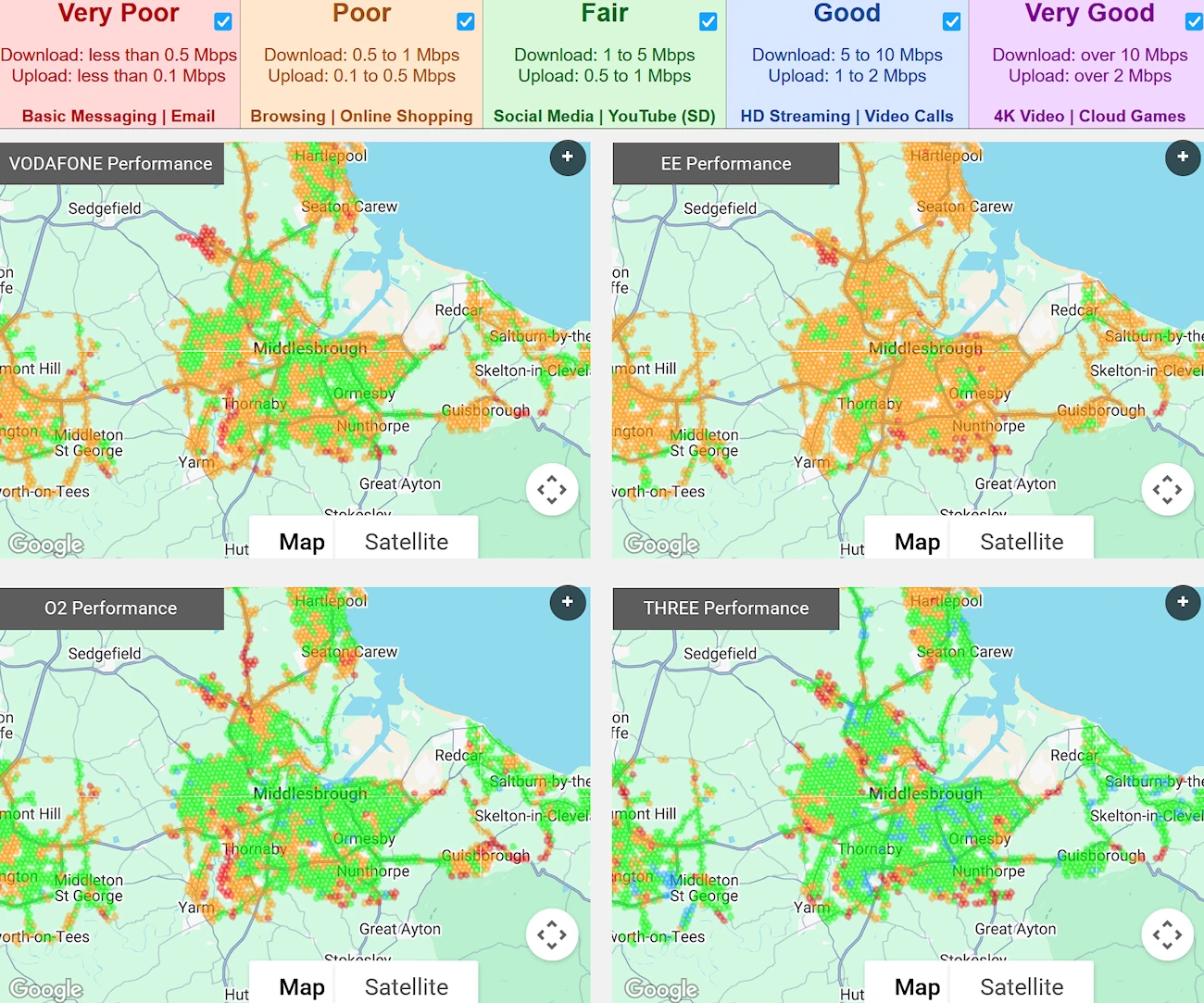Original article ISPreview UK:Read More
The Tees Valley Combined Authority (TVCA) in North East England, which covers Darlington, Hartlepool, Middlesbrough, Redcar and Cleveland and Stockton-on-Tees, has today published a map of mobile signal quality and mobile broadband performance – the result of their prior work with Inakalum to harness local bin lorries to help test 4G and 5G coverage.
The idea of harnessing refuse collection trucks, equipped with special kit on top, to help map mobile network coverage and data speeds via EE, Vodafone, O2 and Three UK is not a new one. Streetwave have been doing it across a large part of the UK for the past few years, and Inakalum recently started adopting a similar approach.
The aforementioned project was first announced back in June 2025 (here) and the data collection phase has since completed. The good news today is that this information has now been made available to the public via the new Tees Valley Mobile Coverage Checker. The map allows users to see the mobile broadband performance and signal quality of each of the major UK mobile operators in the area.
The map also reveals how western Ingleby Barwick, Boosbeck, western parts of central Darlington and parts of Seaton Carew are just some of the areas where coverage is lacking.

Tees Valley Mayor, Ben Houchen, said:
“Poor signal and mobile performance issues are more than an inconvenience – they hurt our businesses, harm our push to become a hotspot for digital investment and create an unfair postcode lottery of coverage across Teesside, Darlington and Hartlepool.
This tool will allow people to make more informed choices about the provider they choose and will equip us with the hard evidence we need to tell big firms and the Government to sort out coverage blackspots.”
The map is likely to be a lot more accurate and reflective of local signals than the usual, and often unreliable, predictions of network coverage from the major mobile operators. The project is now looking for people and businesses to provide even more data to help them identify areas which may have been missed.